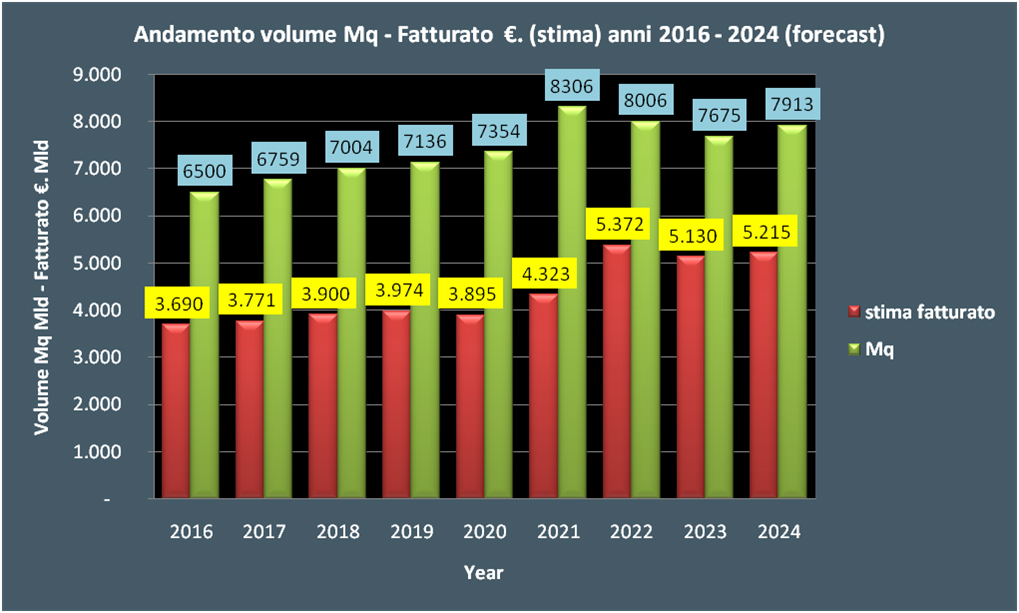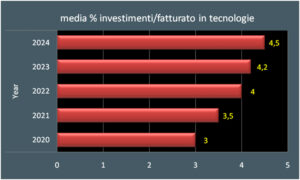Last November, Nexpack, which offers multidisciplinary consultancy for corrugated cardboard and packaging companies (multinationals and SMEs) which combines vertical managerial experiences, specific in the corrugated cardboard and packaging sector, with transversal ones gained during years of work in multiple sectors, and GIFCO organized a webinar to illustrate the potential of Chat GPT, especially if used as a daily work tool, also with interactive practical cases

The meeting began with a snapshot of the corrugated cardboard sector: with a CAGR expected of 6.8% from 2023 to 2033, besides it is expected that by 2033 this market will be worth 277.75 billion dollars. In the coming years, the growth of the market will be driven by an increase in online sales and greater consumer awareness of sustainable packaging. Furthermore, the increase will be due to the ban on plastic packaging in developing countries such as India, by growing industrialization and by the increase in international trade. The market expansion is expected to be supported by the widespread use of corrugated cardboard for products such as bottles of liquids, fruit and vegetables, ready-to-eat foods and confectionery products.

Who is afraid of Artificial Intelligence?
You shouldn’t be afraid because the foundation of AI, both on a practical and theoretical level, is only imitation. It imitates the actions, languages, organization and knowledge of human beings: thanks to deep learning and the incorporation of billions of information, it can develop “new” or rather “generative” solutions. After all, human beings have always wanted to know, or at least peek into the future, so the predictive capacity provided by AI is fundamental.

We have all certainly used Chat GPT, an AI chatbot that uses generative AI and machine learning and created by the American OpenAI (with billion-dollar investments from Microsoft) and based on a conversational model, to communicate, in writing, with human end users. Last May, OpenAI announced the new GPT-4o model (where the ‘o’ stands for omni), equipped with the same “intelligence” as GPT-4, but much faster and above all multimodal, that is, capable of analyzing, even simultaneously, text, audio, video and images. “AI must be governed in a functional and conscious way, but companies must start implementing professional requalification programs for their staff involved and workers must accept these alignment activities to avoid being excluded from the world of work”, said Francesco Pagliarini, general manager of Nexpack. Not everyone in the world can access Chat GPT, these are the excluded countries: China, Afghanistan, Belarus, Venezuela, Iran, Russia and Ukraine.
Practical uses
AI is also having a growing impact in the packaging sector, helping companies to optimize production and automation, reduce waste, manage quality control, better respond to market needs with packaging customization and the study of specific marketing campaigns; for security and compliance monitoring, for trend forecasting and software & tools integration, for innovation and sustainability with research of eco-sustainable solutions and generation of innovative ideas.
In a marketing department, using Chat GPT can lead to significant time savings, especially for content generation, data analysis and communication: in the long term, these time savings translate into increased productivity, being able to dedicate more time to strategic and creative decisions, improving the quality of work and reducing repetitive and manual workload. Chat GPT is also very useful for sales, for example for managing information and follow-up of negotiations.
During the webinar, they also talked about LLMs (Large Language Models), AI algorithms trained on large amounts of text with the aim of understanding and generating a natural language similar to human language: if the models analyze more data, they become skilled at answering questions, completing texts, or conversing fluently.
![]()
To communicate better, however, it is necessary to learn the art of formulating commands or requests (prompts) effectively to obtain the best responses from a language model: this is the Prompt Engineering. A good prompt must be clear, specific and any ambiguity must be avoided, you must provide an adequate context, and sometimes it requires subsequent attempts to perfect it. Furthermore, it is advisable to ask direct and targeted questions, instead when asking the model complex operations, it can be useful to divide the task into specific steps, thus improving the accuracy of the answer.
“To improve the professional use of Chat GPT Nexpack, with its department dedicated to human resources Umanex, can provide complete support through the mentor-coaching methodology (training support), which is divided into three options, depending on the needs and the organizational context, but where in all of them is foreseen an activity dedicated to the single company and up to a maximum of five people for each module”, concluded Andrea Baragatti, Project Manager of Nexpack.























